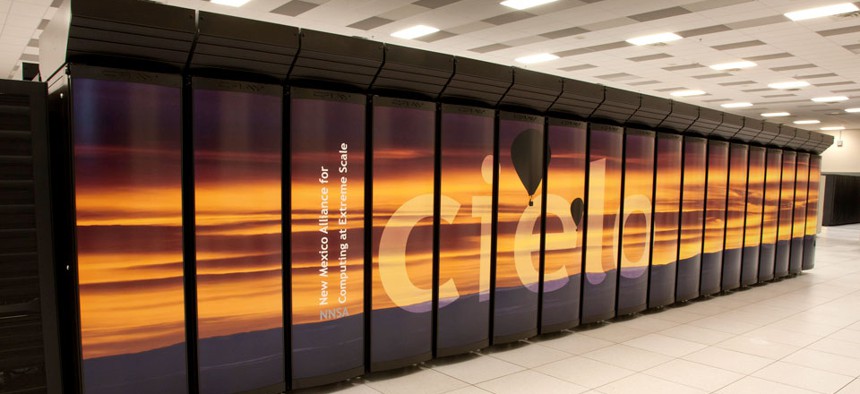NNSA Taps Cray for New High-Speed Supercomputer for Los Alamos Lab

The Cray Cielo supercomputer installed at Los Alamos, which runs at a speed of 1.37 petaflops. NNSA
Machine will rank among top 10 supercomputers when installed in mid-2015.
The National Nuclear Security Administration awarded Cray Inc. a $174 million contract to develop a new supercomputer capable of crunching data at speeds measured in multiple quadrillion of operations per second (petaflops) to conduct nuclear weapons simulations.
Neither Cray nor NNSA disclosed the speed of the new machine. However, if in operation today, the new machine would rank in the top 10 class of supercomputers, said Nick Davis, a Cray spokesman.
Tianhe-2, a supercomputer developed by China’s National University of Defense Technology, ranks as world’s fastest system, with a performance of 33.86 petaflops as of last month.
The new supercomputer, named Trinity after the code name for the first atomic bomb tested in August 1945, will be installed at Los Alamos National Laboratory and will also be used by Sandia National Laboratories, both located in New Mexico.
NNSA did disclose that Trinity will run applications eight times faster than the Cray “Cielo” supercomputer installed at Los Alamos, which runs at a speed of 1.37 petaflops. Cray will develop Trinity with advanced chips from Intel, while Cielo uses chips from Advanced Micro Devices.
Cray said Trinity will include 82 petabyes of storage. Bill Archer, Los Alamos Advanced Simulation and Computing program director said: “The needs of the mission drive the need for increased memory rather than computing speed alone. Trinity will be a very fast machine, but the real key is having enough memory to solve extremely complex calculations,” for weapons simulation. Beefed-up memory will allow the labs to perform more detailed weapons simulations, NNSA said.
The United States adopted nuclear weapons simulation following a ban of all live nuclear tests in 1966.
Cray will start deployment of Trinity in phases in mid-2015.






